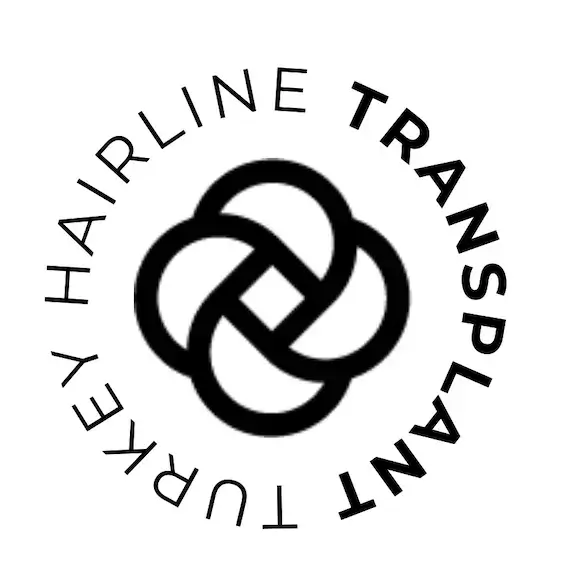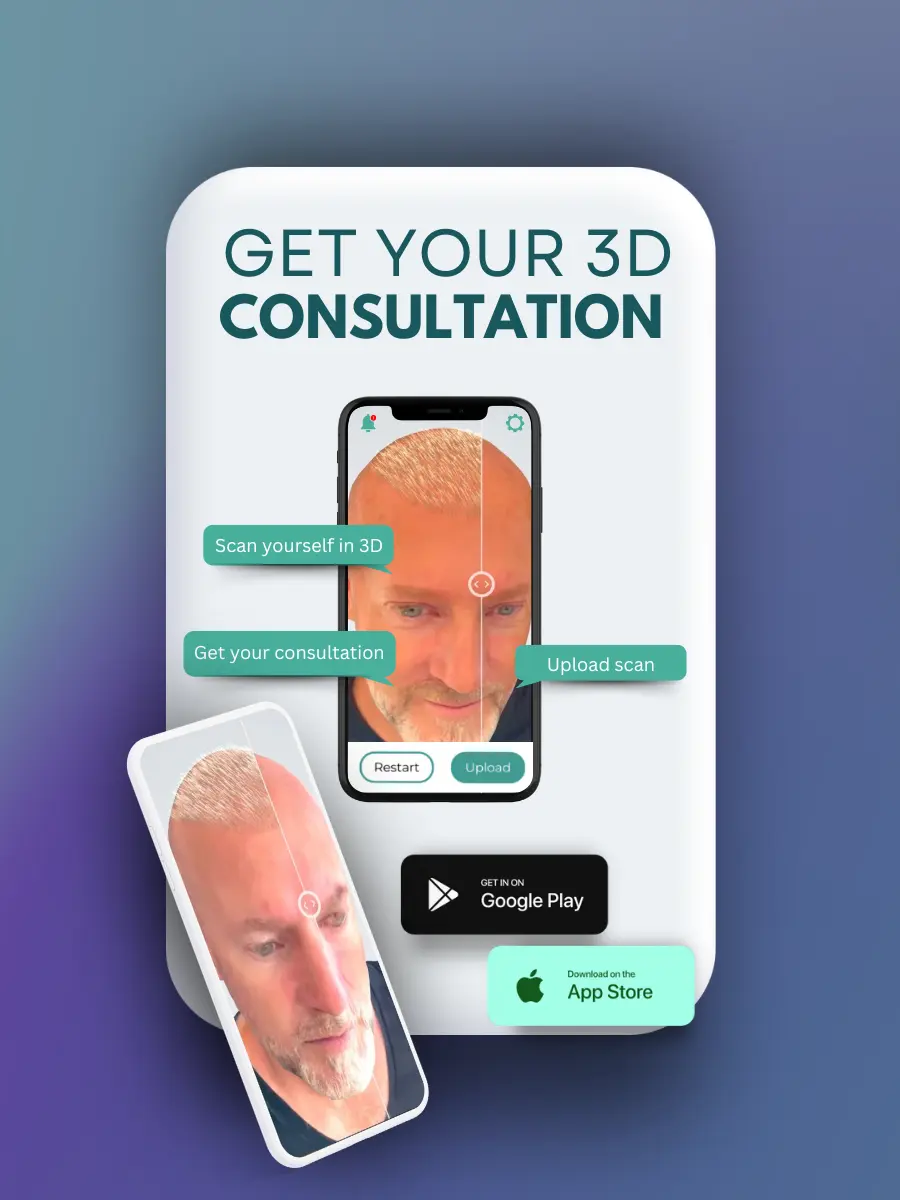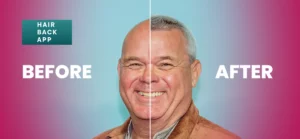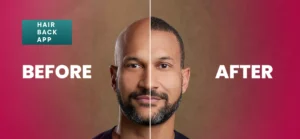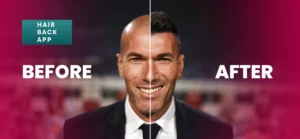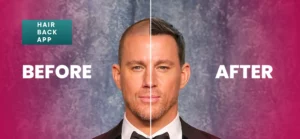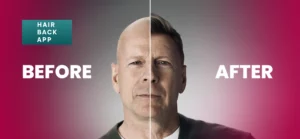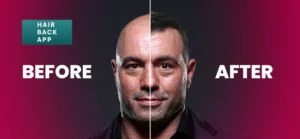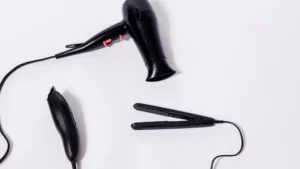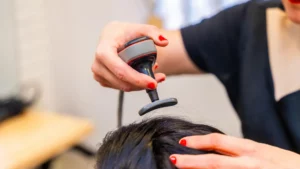Many people wonder if wearing a helmet can cause hair loss. While wearing a helmet alone may not directly cause hair loss, prolonged and frequent use, especially if the helmet is tight-fitting or doesn’t allow proper ventilation, can potentially contribute to hair problems such as breakage, traction alopecia, one-sided hair loss, or exacerbate existing hair loss conditions.
My name is Emma Wright, and I bring a unique blend of expertise to this article. As a seasoned writer and content specialist with a strong background in the medical field, particularly in dermatology and trichology, I have had the privilege of exploring and understanding the complexities of hair health over the past decade.
In this article, I will delve deeper into the relationship between wearing anti-hair loss helmets and hair loss and provide practical tips to help you prevent hair loss while wearing a helmet.
Let’s get started!
In the quest for confidence and self-assurance, our hair often plays a starring role. Yet, for many people facing the distressing reality of hair loss, that confidence can feel elusive. Whether it’s due to hereditary hair loss, environmental factors, or lifestyle choices, hair loss can impact not only our appearance but also our sense of self-esteem and well-being.
Enter the anti-hair loss helmet – a modern marvel that promises to rewrite the narrative of hair loss. With its innovative technology and targeted approach, this specialized device offers hope to those grappling with thinning hair and receding hairlines.
But how does it work, and can it truly deliver on its promises?
Time to find out!
What is an Anti-Hair Loss Helmet?
An anti-hair loss helmet is a specialized device designed to combat hair loss and promote hair regrowth. It typically utilizes advanced technologies such as low-level laser therapy (LLLT) and light-emitting diodes (LEDs) to stimulate hair follicles, improve scalp health, and encourage the growth of new hair.
The helmet is worn directly on the head, covering the scalp, and emits low-level laser or LED light energy onto the scalp. This energy penetrates the skin without causing any damage, reaching the hair follicles and stimulating cellular activity.
Additionally, the stimulation of these follicles can help to increase blood circulation in the scalp, deliver essential nutrients, and revitalize dormant hair follicles, leading to thicker, healthier hair growth over time.

Many anti-hair loss helmets are designed for home use, allowing individuals to undergo treatment conveniently and comfortably. These helmets typically require regular use over weeks or months to achieve noticeable results, with sessions ranging from several minutes to half an hour a few times per week.
While results may vary from person to person, many users report improvements in hair thickness, density, and overall scalp health with consistent use of anti-hair loss helmets. It’s important to note that these devices are most effective when used as part of a comprehensive hair care regimen and under the guidance of a healthcare professional.
How Does an Anti-Hair Loss Helmet Work
An anti-hair loss helmet works through the application of advanced technologies, primarily low-level laser therapy (LLLT) and sometimes light-emitting diodes (LEDs), to stimulate hair follicles and promote hair regrowth.
Here’s a breakdown of how it typically works:
- Low-Level Laser Therapy (LLLT): This technology involves the use of low-level lasers that emit specific wavelengths of light. When these lasers are applied to the scalp, they penetrate the skin without causing any damage. The light energy is absorbed by the cells in the hair follicles, where it stimulates cellular metabolism and increases blood circulation. This process helps to revitalize dormant hair follicles, prolong the hair growth phase (anagen), and promote the growth of thicker, healthier hair.
- Light-Emitting Diodes (LEDs): In some anti-hair loss helmets, LEDs are used in conjunction with LLLT. Similar to LLLT, LEDs emit specific wavelengths of light that can penetrate the scalp and stimulate hair follicles. While the mechanisms may differ slightly from LLLT, LEDs also work to improve cellular function and promote hair growth.
- Improved Blood Circulation: By increasing blood flow to the scalp, anti-hair loss helmets help deliver essential nutrients and oxygen to the hair follicles. This improved circulation nourishes the follicles, promotes a healthier scalp environment, and supports optimal hair growth.
- Stimulation of Hair Follicles: The targeted application of laser or LED light energy directly to the scalp stimulates the hair follicles, encouraging them to transition from the resting phase (telogen) to the growth phase (anagen). This stimulation can also help to extend the duration of the growth phase, leading to longer, thicker hair over time.
- Consistent Use: Anti-hair loss helmets are typically used regularly for weeks or months to achieve optimal results. Users may undergo treatment sessions several times per week, with each session lasting for a specified duration. Consistency is key to seeing improvements in hair density, thickness, and overall scalp health.
9 Tips to Wear Helmet Without Hair Loss
Wearing a helmet is essential for safety while riding a motorcycle or engaging in certain sports activities, but it’s understandable to be concerned about potential hair loss due to prolonged helmet use.
Here are nine tips to help minimize the risk of hair loss while wearing a helmet:
- Choose the Right Helmet: Opt for a hair loss helmet that fits properly and comfortably. A well-fitted helmet will distribute pressure evenly across the scalp, reducing the risk of friction and hair damage.
- Keep Hair Clean and Dry: Dirt, sweat, and excess oil can exacerbate hair loss. Ensure your hair and scalp are clean and dry before wearing a helmet. Consider using dry shampoo or powder to absorb excess oil if needed.
- Wear a Helmet Liner or Bandana: Place a soft liner or bandana inside the helmet to create a barrier between the helmet and your scalp. This can help reduce friction and irritation, minimizing the risk of hair loss.
- Loosen Straps: Avoid wearing the helmet too tight. Loosen the straps to reduce tension on the scalp and minimize the risk of traction alopecia, a form of hair loss caused by continuous pulling on the hair follicles.
- Take Breaks: If possible, take breaks during long rides or activities to allow your scalp to breathe and relieve pressure from the helmet. Remove the helmet periodically and gently massage your scalp to improve circulation.
- Choose Helmet Materials Wisely: Opt for helmets with soft padding and smooth inner linings to minimize friction and irritation. Avoid helmets with rough or abrasive materials that may cause damage to the hair and scalp.
- Style Hair Appropriately: Avoid tight hairstyles such as ponytails, braids, or buns that can create additional tension on the scalp. Instead, opt for loose styles or hairstyles that distribute the hair evenly and minimize stress on the hair follicles.
- Maintain Good Hair Care Practices: Practice good hair care habits, such as using a mild shampoo and conditioner, avoiding excessive heat styling or chemical treatments, and gently detangling hair to prevent breakage. Keep your scalp and hair healthy to minimize the risk of hair loss.
- Try an Anti-Hair Loss Helmet: Consider using an anti-hair loss helmet, which is specifically designed to combat hair loss and promote hair regrowth. These helmets utilize technologies such as low-level laser therapy (LLLT) or light-emitting diodes (LEDs) to stimulate hair follicles and improve scalp health. Adding regular sessions with an anti-hair loss helmet into your routine will complement your efforts to prevent hair loss while enjoying the benefits of wearing a helmet for safety.
Bottomline
Wearing a helmet doesn’t have to mean sacrificing your hair. Implementing the tips mentioned above will help you minimize the risk of hair loss while enjoying the benefits of helmet protection.
However, if you’re still struggling with hair loss despite these efforts, don’t lose hope. There are various options available to address hair loss, including advanced treatments like hair transplants.
Whether you’re seeking further advice on preventing hair loss or considering hair transplant options, we’re here to help. For more tips and insights on managing hair loss and maintaining healthy hair, visit our blog.
Additionally, if you’re considering a hair transplant and want to explore reputable clinics, check out our reviews of the best hair transplant clinics in Turkey. With the right information and guidance, you can take proactive steps toward restoring your confidence and achieving your desired hair goals.
